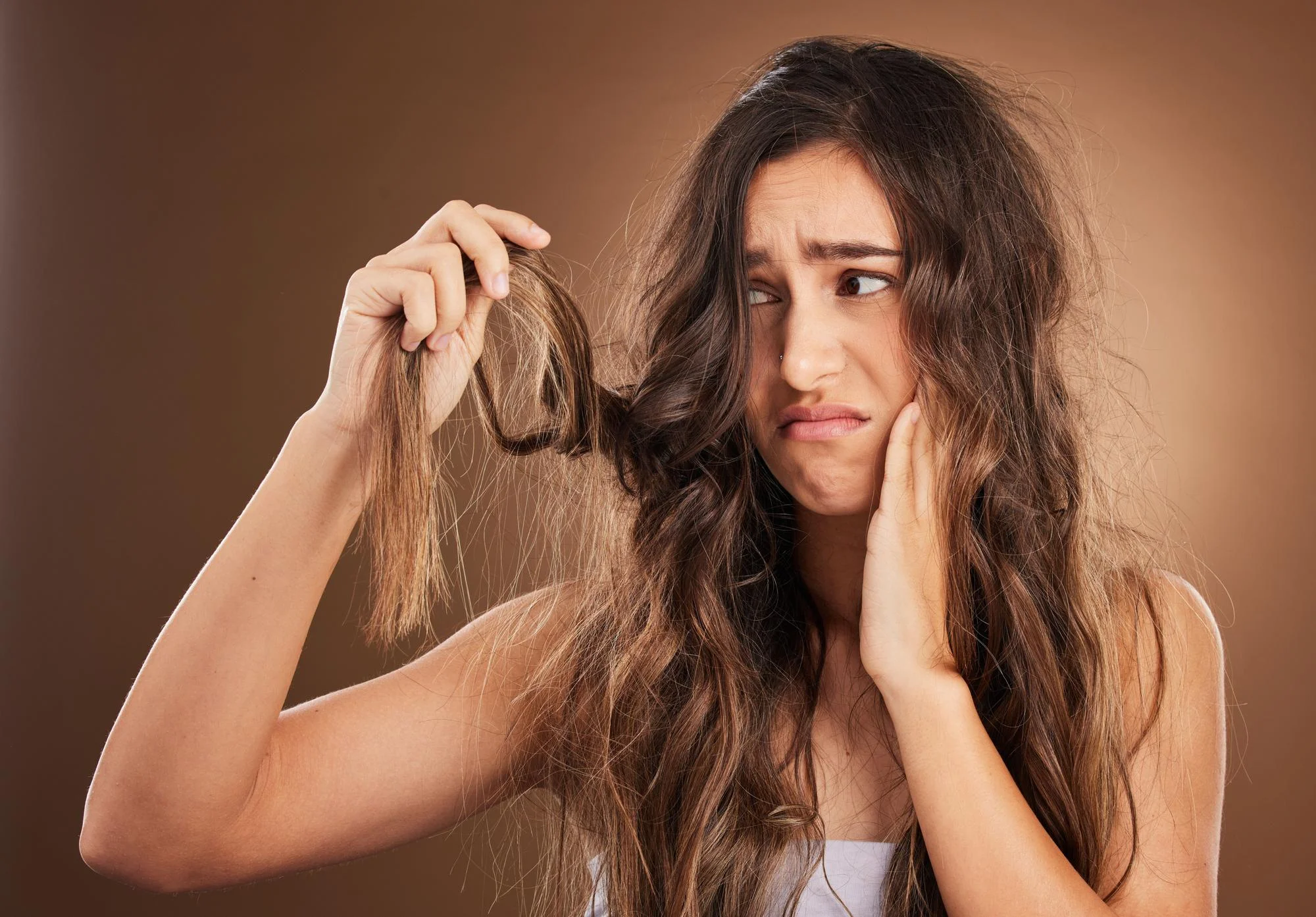Our hair needs a healthy balance of moisture to stay shiny, soft, and manageable. But due to various internal and external factors, that natural moisture can be lost—leading to dryness, dullness, and brittleness. When hair becomes dry, it’s harder to style and more prone to damage.
So, what causes dry hair, and what can you do to restore its health? In this guide, we’ll explore the common causes of hair dryness and effective methods to bring moisture back to your hair.
What is Hair Dryness?
Hair dryness happens when your hair doesn’t get or retain enough moisture. This can make it look dull, brittle, and lifeless. It’s often caused by a lack of natural oils that keep your hair soft and shiny. Dryness may result from internal factors like diet or stress, or external ones like sun exposure, hot water, or harsh hair products.
Washing hair too often, using heat tools frequently, and exposure to chemicals can all strip the hair of its natural oils. Fortunately, with the right care routine and products, dry hair can be improved and brought back to a healthy state.
What Causes Dry Hair?
Dry hair is a common issue that usually stems from external factors like using the wrong hair products or washing hair too often. When shampoos and conditioners aren’t suited to your hair type, they can strip away essential oils, leaving both your scalp and hair dry.
Other causes include environmental stress (like sun and wind), poor diet, and dehydration. All these contribute to a loss of moisture, making hair more prone to damage.
How Often Should You Wash Dry Hair?
It’s important to keep your hair and scalp clean—but washing too often can make dry hair even worse. Ideally, washing your hair 2–3 times a week is enough to prevent dryness while keeping your scalp healthy.
Use a gentle shampoo and a nourishing conditioner to help retain moisture and reduce split ends. Also, avoid very hot water, which can strip away natural oils. Instead, rinse with lukewarm water.
Other helpful habits include trimming the ends regularly, avoiding excessive use of heat tools, and letting your hair air-dry when possible.
What’s Good for Dry Hair?
To keep dry hair looking and feeling its best:
- Apply hair masks regularly to restore moisture and shine.
- Use both shampoo and conditioner to clean and moisturize.
- Massage your scalp to boost circulation and support healthy hair growth.
At-home treatments can be very effective, but for more stubborn dryness, professional treatments like stem cell therapy, PRP, or hair mesotherapy may help. These target the scalp, nourish the follicles, and restore the hair’s natural moisture and elasticity.
Simple Tips to Care for Dry Hair
Trim Split Ends Regularly
Split ends can make hair look frizzy and prevent it from growing well. Trimming them every 6–8 weeks helps reduce breakage and keeps your hair healthier and stronger.
Avoid Excessive Heat
Using straighteners, curling irons, or hot blow dryers too often can dry out hair and cause damage. If you use heat tools, apply a heat protectant spray to shield your hair from high temperatures.
Skip Hot Water
Hot water strips away the natural oils that protect your hair and scalp. Try using lukewarm or cool water instead, which helps preserve moisture.
Best Products for Dry Hair
Hair Oils
Natural oils like argan, coconut, jojoba, or almond oil nourish dry hair and help lock in moisture. They also make hair shinier and reduce breakage. Apply once a week or as needed based on your hair’s condition.
Moisturizers and Serums
Hair moisturizers—such as masks, serums, or leave-in treatments—help maintain moisture levels and improve shine and softness. Use them regularly for best results.
Don’t Forget to Hydrate
Staying hydrated is just as important for your hair as it is for your skin. Drinking enough water (about 2–2.5 liters per day) helps your body function properly and keeps your scalp and hair well-hydrated from the inside out.
Professional Treatments for Dry Hair
Hair Mesotherapy
This involves injecting a mix of vitamins and nutrients into the scalp to deeply nourish the hair follicles. It helps restore moisture, reduce dryness, and promote healthy, shiny hair. You can get more information on our Hair Mesotherapy page.
PRP (Platelet-Rich Plasma) Therapy
PRP uses plasma taken from your own blood and injects it into the scalp. This boosts hair regeneration, strengthens strands, and helps restore moisture balance over time.
Exosome Hair Therapy
A cutting-edge treatment, exosome therapy uses regenerative biological components to repair dryness and improve scalp health. It stimulates hair growth and leaves hair looking shinier, fuller, and more vibrant. Rediscover the natural beauty of your hair with Exosome Hair Therapy.
Get a Personalized Treatment Plan
Since everyone’s hair is different, a one-size-fits-all approach doesn’t always work. Dr. Eren Ünal offers custom treatment plans tailored to your specific needs. Whether it’s PRP, Hair Mesotherapy, or Exosome Hair Therapy, Dr. Ünal designs a plan to restore moisture and bring your hair back to life.
With the right treatment, your hair can become shinier, healthier, and stronger—so you can feel confident and vibrant again.
Frequently Asked Questions
Dry hair can happen when your scalp doesn’t produce enough natural oils or when hair care products are used incorrectly. To improve hair health, try nourishing your body with a balanced “hair-friendly” diet—rich in vitamins, healthy fats, and hydration.
You can achieve healthy, vibrant hair by using natural hair care products and regularly applying nourishing hair masks to keep your hair moisturized.
To keep your scalp’s natural balance intact, it’s important to choose the right hair care products and regularly apply hydrating hair masks. For more advanced and long-lasting results, treatments like PRP, mesotherapy, and stem cell therapy offer highly effective solutions for dry hair.
Lightweight care oils are ideal for fine hair and can be gently applied to the ends and scalp to help combat dryness and restore moisture.
You can boost your hair’s moisture by using a conditioner that suits your hair type and supporting it from within with a nutrient-rich diet.


